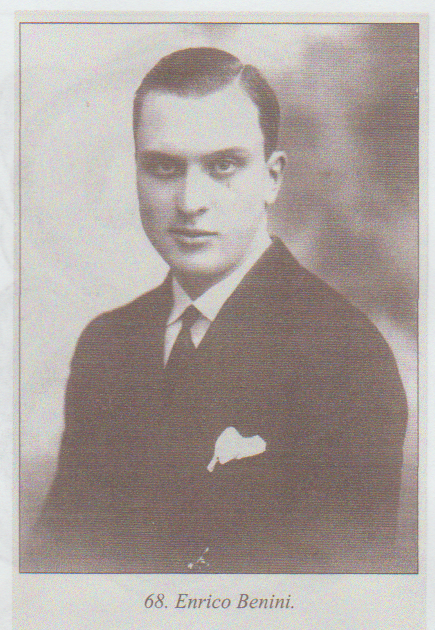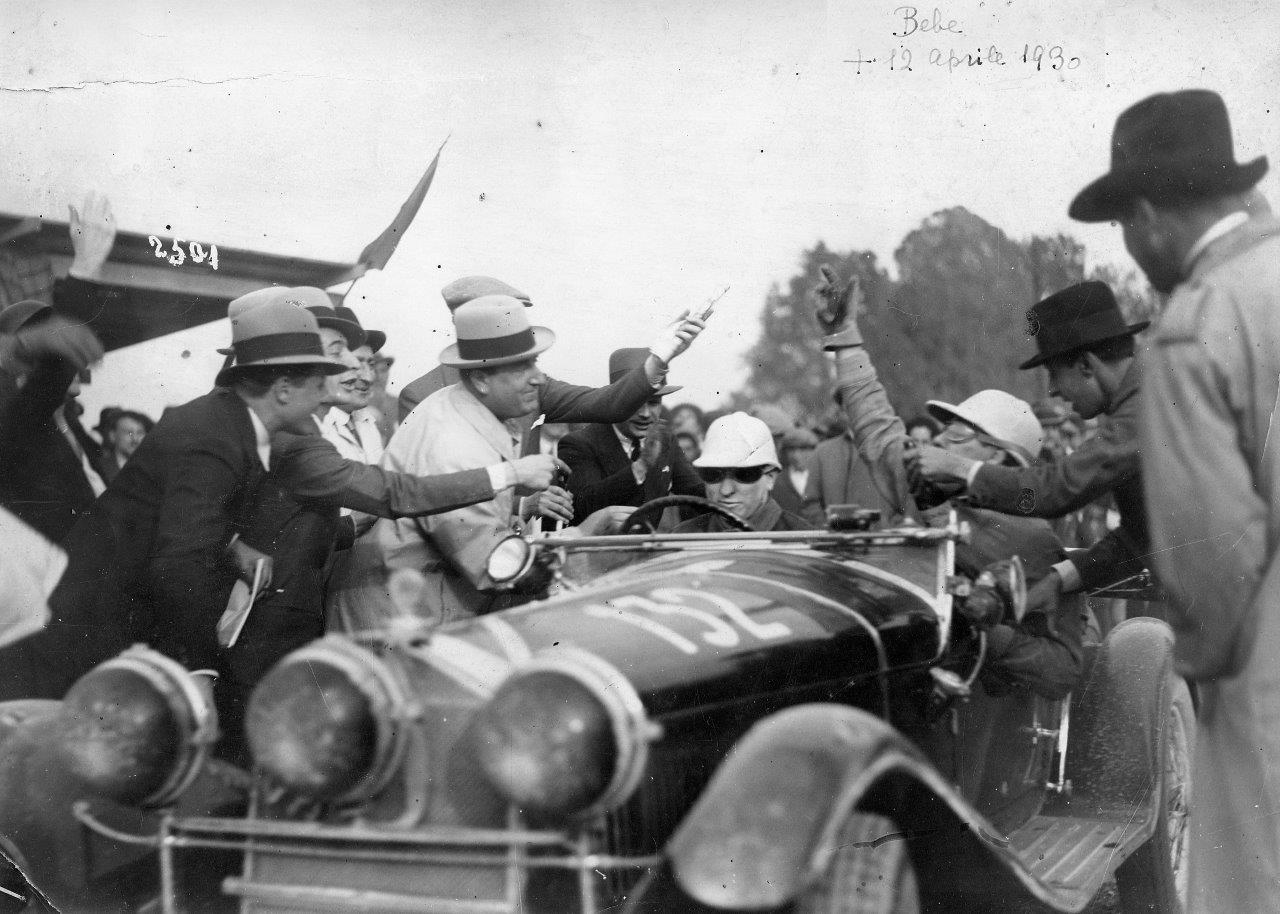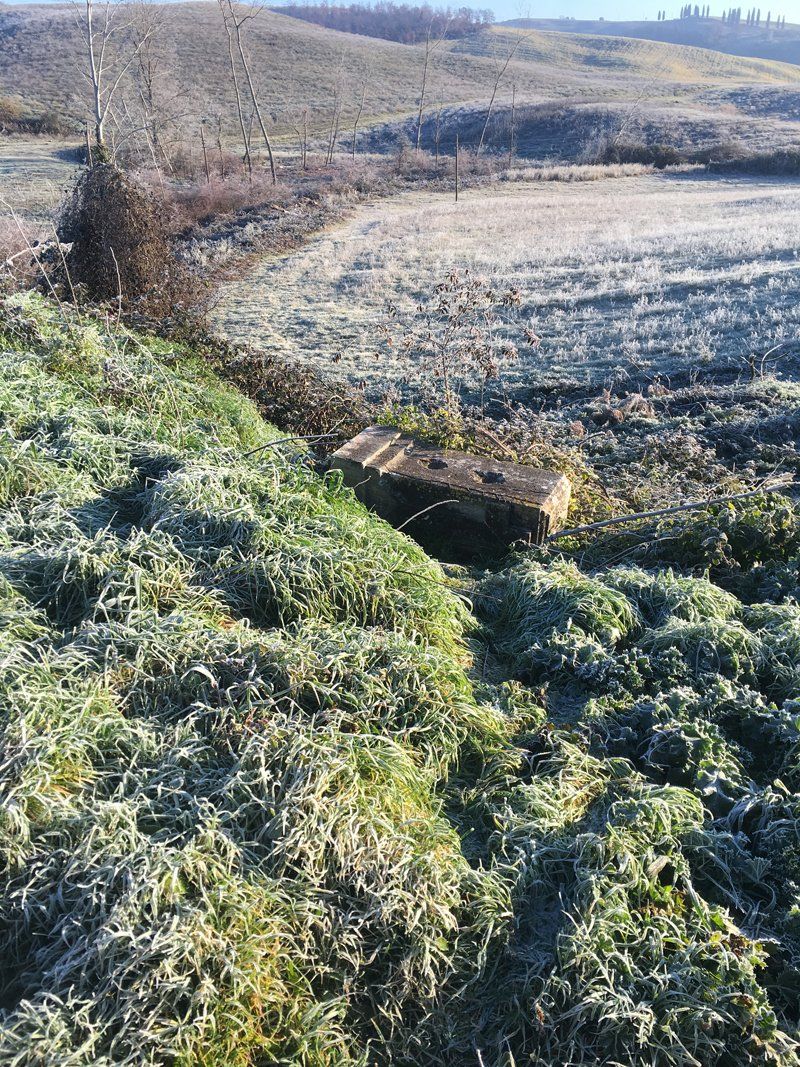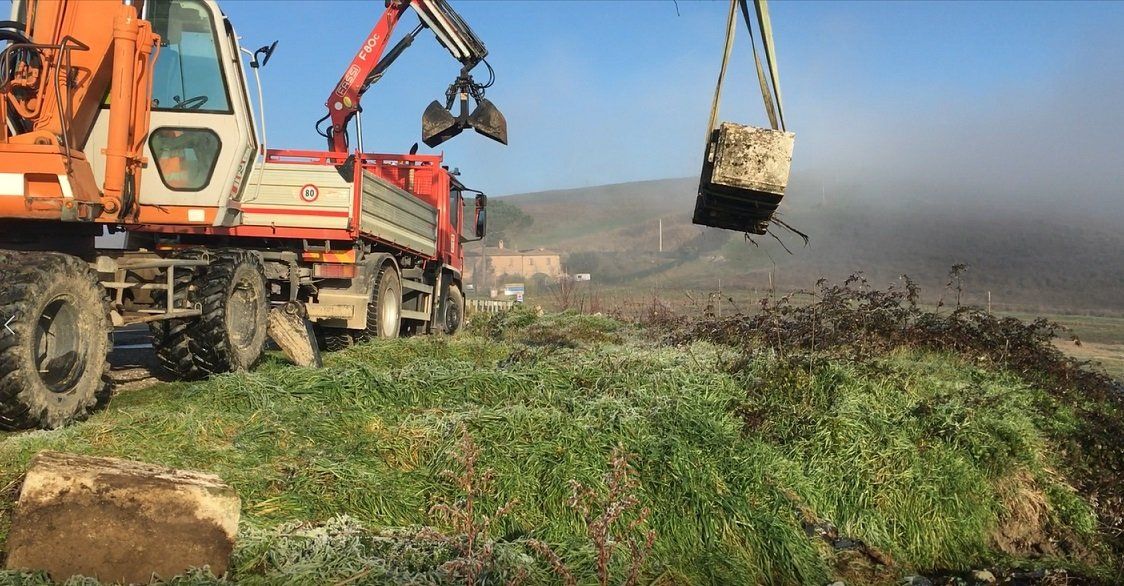CIPPO ENRICO BENINI
The Siena Club Auto Moto d'Epoca has decided to restore and reposition the Memorial Stone of the disappearance of the driver Enrico Benini during the 1930 Mille Miglia following an accident on the Cassia at the bridge over the Serlate stream. The Cippo in travertine had been positioned for many years on the left side of the Cassia towards Rome and was among the existing trees and the vegetation on the side of a rest area and not easily identifiable. Following the cleaning and pruning of the trees, the Cippo was no longer in its position and following our research on the place it was found in the slope below, perhaps due to the fall of one of the large trees that existed before. Our Club decided to intervene and above all to find out to whom the Cippo was dedicated that we knew in memory of a Mille Miglia accident but without knowing the year and the correlation with the driver or drivers involved in the episode. The position of the Cippo did not allow an easy and certain reading of the dedication and it was decided to ask the Managers of the Province of Siena, the body owner of the road, for their intervention with suitable means to be able to lift and then transport the Travertine stone, which happened in a short time. This intervention made it possible to start research on the accident that had occurred in the Mille Miglia of 1930 and the deceased driver was the 25-year-old Florentine Enrico Benini driving an Alfa Romeo 1750 SS. From the articles of the time it emerged that the disaster occurred following the contact of the car with the parapet of the bridge and the Benini was thrown out of the car violently beating his head on a stone. The research on the young pilot led to discover that Enrico belonged to the Benini family, founder of the Fonderia del Pignone, and that he was already in charge of the management of the foundry with his father. His sporting history as a driver is not very crowded with participation in races as he is also engaged in the study for his preparation to become heir to the family industry but the few participations had revealed truly high skills as a driver reaching, at his debut, fifth. absolute in the Mugello Circuit in 1928 and participating in the Ciano Cup in Livorno in the same year. In 1929 he conquered an important and prestigious position at the Mugello Circuit, finishing third overall behind Brilli Peri and Morandi and ahead of drivers such as Campari, Ferrari, Nuvolari and Varzi. In 1930 he participated in his second Mille Miglia and the tragic fate awaited him on April 12 at the wheel of the Alfa Romeo 1750 SS Spyder Zagato in the accident that the memorial stone recalls.










